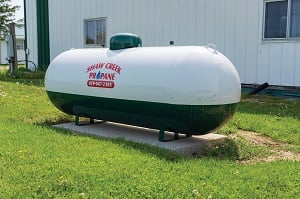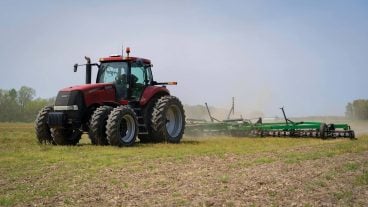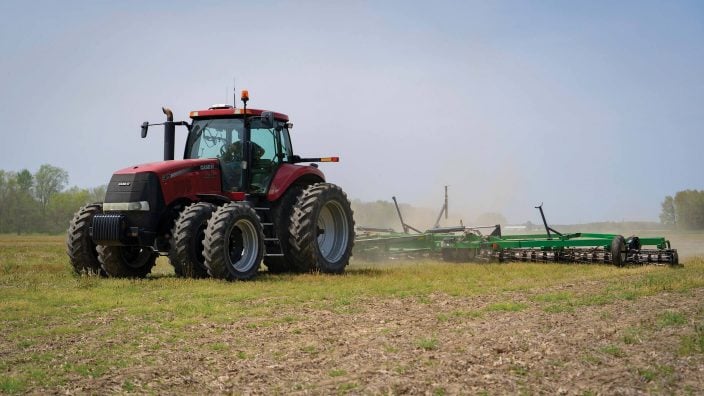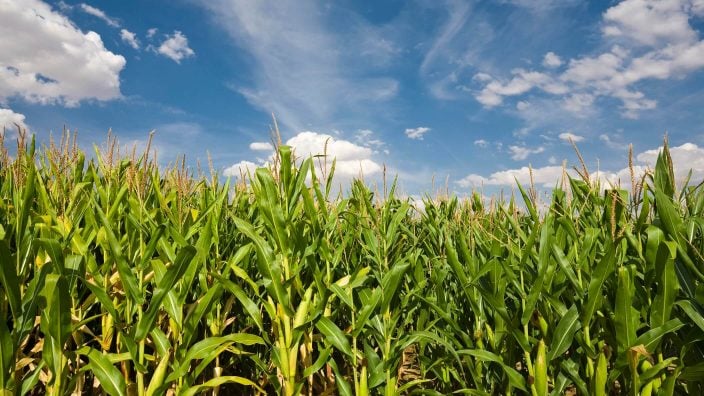The case for more homegrown fuel
Even though fuel prices remain high, the increased use of corn ethanol is helping temper those price increases. And it’s also benefiting the farmers who grow the corn.
Read MoreEven though fuel prices remain high, the increased use of corn ethanol is helping temper those price increases. And it’s also benefiting the farmers who grow the corn.
This spring, when President Joe Biden lifted restrictions on Unleaded 88 fuel for this summer, he reasoned that using more homegrown ethanol would help ease fuel price spikes related to Russia’s invasion of Ukraine.

Even though fuel prices remain high, the increased use of corn ethanol is helping temper those price increases. And it’s also benefiting the farmers who grow the corn, said John Linder, a Morrow County farmer and Farm Bureau member. “We can answer that import supply issue with higher blends of ethanol.”
Linder, who serves as a board member for the Ohio Corn & Wheat Growers Association and as board president for the National Corn Growers Association, explained that using more corn ethanol in fuel blends can replace higher-priced, imported fossil fuels. “The higher blend allows us to have a more practically priced, bio-based portion of our gas tank.”
Unleaded 88, also known as E15, is a gasoline blend that contains 15% ethanol. The number 88 refers to the fuel blend’s octane rating, explained Tadd Nicholson, executive director for the Ohio Corn & Wheat Growers Association. In comparison, the most commonly used gas blend, Unleaded 87, has an octane rating of 87 and typically contains 10% ethanol. Comparing the octane ratings and the prices of the different blends shows the value ethanol offers, Nicholson said: The higher octane Unleaded 88 is usually priced 10 to 30 cents lower than Unleaded 87.
Many fuel marketers prefer labeling the fuel Unleaded 88 rather than E15 to make the octane level clear to customers, Nicholson explained. “When people go to the gas station they’re used to seeing an octane level.” The lower price and bump in octane are both advantages for consumers, he said. “Your car likes octane and it’s better for your pocketbook.”
Unleaded 88 is not to be confused with E85, which contains up to 85% ethanol, Nicholson added. E85 is meant to be used in flex fuel vehicles, which are designed to run well on a variety of fuel blends. On the other hand, all vehicles manufactured since 2001 are approved to use Unleaded 88.
Summertime sales of Unleaded 88 are usually restricted in the United States by provisions in the Clean Air Act, but modern biofuels weren’t in use when that law was written, Nicholson pointed out. “E15 was not even thought of then.” Now those historic restrictions lead some consumers to believe that allowing higher ethanol blends in warm months will hurt air quality. That’s not the case, Nicholson said. In fact, as the ethanol in fuel increases above the 10% E10 blend, the volatility of the fuel decreases. So, in the case of 15% ethanol blends, the Clean Air Act is actually working contrary to its purpose.
A permanent elimination of the summertime restriction on Unleaded 88 will take a change in the law. That’s something Farm Bureau and the National Corn Growers Association have been advocating for years, Nicholson said. “D.C. should have fixed this a long time ago.”
Nicholson and Linder would also like to see greater availability of Unleaded 88. Currently the Ohio Legislature is considering a bill that would give retailers a tax credit if they offer higher ethanol fuel blends such as Unleaded 88 and E85. House Bill 165 was passed by the Ohio House last November and is currently under consideration by the Ohio Senate Ways and Means Committee.
At the national level, the Next Generation Fuels Act is a legislative priority for the National Corn Growers Association, Linder added. It would benefit consumers and the environment as well as corn farmers by promoting the approval and sale of higher ethanol fuel blends.
“As much as we focus on a win for the farmer, it’s not one-sided,” he said.
One argument that sometimes comes up in opposition to ethanol is the idea that using corn for fuel causes shortages that increase food prices. That idea overlooks the fact that the U.S. has plenty of corn carryover, Nicholson said. The carryover, simply defined as the corn that does not have a buyer, shows there’s no shortage. “We have lots of excess corn,” he pointed out.
Food prices have increased recently, but there are many causes for the increases, such as inflation and logistical problems. Those factors have nothing to do with ethanol, Nicholson said. “Commodity prices are such a small part of the price of food.”
Producing ethanol in Ohio has benefited the state’s economy, Nicholson added. Instead of shipping corn elsewhere, value is being added to the crop within Ohio, creating economic activity and generating tax revenues. “We used to take our corn that we didn’t feed in the state and send it to other states and they would add value to it,” he said. “Now, since we have ethanol plants in Ohio, we can grow the corn here, turn it into a higher value ethanol here and use it in our cars here. All that economic activity stays within our borders.”
Ethanol production has also improved the stability of the corn market, Linder added. The state’s farmers benefit when corn produced here can be used nearby, whether the corn is being used to make ethanol or to feed livestock, he said. “We don’t have to meet the buyer where they are; we can use it here.”

Some of the corn Linder’s family produces goes into hog feed, some goes into chicken feed and some goes to an ethanol plant. However, he added, “It all ends up in livestock at some point.”
Ethanol production converts the starchy part of the corn kernel into fuel, but the protein is all retained in the co-product, DDGS (distiller’s dried grains with solubles). “The world is short of protein and one of the most exciting things about processing Ohio corn in Ohio ethanol plants is the co-products. The high quality DDGS brings back 100% of the protein that’s delivered to them,” he explained.
DDGS is used as a high-protein ingredient in livestock feed, helping supply the world’s need for protein, Linder pointed out. “Every kernel of corn that our family raises, every bushel that leaves our farm gate, goes to feed livestock.”


Even though fuel prices remain high, the increased use of corn ethanol is helping temper those price increases. And it’s also benefiting the farmers who grow the corn.
Read More

So far, governors in eight Midwestern states have taken the action of notifying the EPA that they wish to switch to this fuel.
Read More

For some agriculture groups, more pain at the pump creates opportunities for education about home grown renewable energy, like ethanol and biodiesel.
Read More